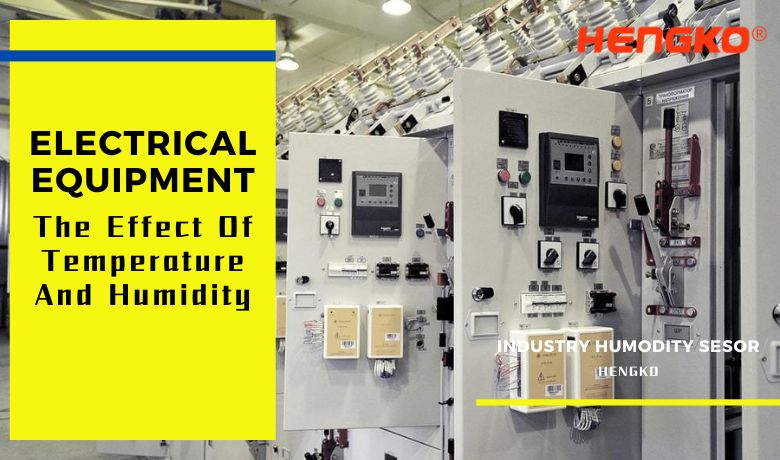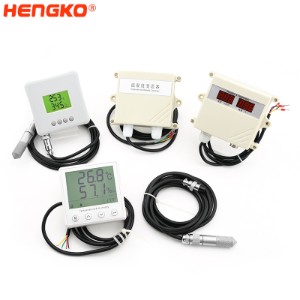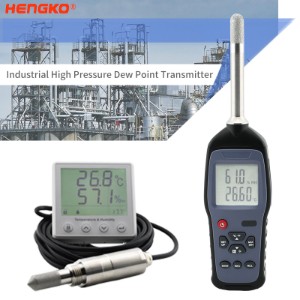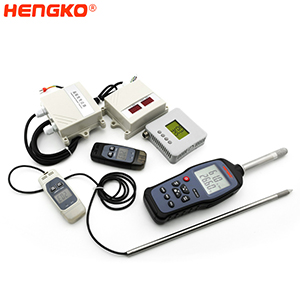The Effect Of Temperature And Humidity On Electrical Equipment

In recent years, due to the greenhouse effect, the temperature has been rising year by year, and the atmospheric environmental factors have gradually become worse, such as high temperature, high humidity, and another variable climate, so that the indoor power distribution facilities are facing more and more obvious threats. The electrical operation of air temperature and humidity on the safe operation of electrical equipment will have a lot of impacts. We must monitor temperature and humidity to reduce damage to electrical equipment due to changes in temperature and humidity. HENGKO will provide excellent temperature and humidity sensor measurement solutions. Please consult us.
For those who have been engaged in electrical work for a long time, it is easy to recognize the law that
1. sudden accidents with power distribution equipment often occur in the dead of night.
2. the fault-prone season of electrode mechanical equipment is in the humid spring.
3. sudden temperature changes (sudden lowering or rising) in the seasonal exchange season often make electrical equipment fail easily.
Phenomena Generated by Temperature and Humidity
The main reason for the above phenomenon is humidity and temperature: first, let's review the physical properties of air. We know that the Shanghai area belongs to the warm temperature zone. Temperature range: -5 ℃ ~ +35 ℃, the daily temperature difference: 10 ℃, relative humidity: relative to the ambient temperature 20 ± 5 ℃, the monthly average value: ≤ 75% ≤ 5 m. The hygroscopic capacity of the air changes with the temperature change. The higher the temperature, the greater the moisture absorption capacity of the air; the lower the temperature, the weaker the moisture absorption capacity of the air. So, the air absorbs moisture as the temperature rises during the day. At night, as the temperature decreases, the air releases moisture, increasing the air's relative humidity. For example, in summer, the local weather station forecasts that the relative humidity in a day is more than 65%-95%. The maximum humidity of the air should occur at night when the temperature is the lowest. However, we also know that the relative humidity required for electrical equipment cannot exceed 90% (25°C and below). It follows that high humidity is a major factor in generating equipment accidents during the night. In the past, many people thought it was due to the late night, load reduction, and voltage increase, but now it seems to be not valid. Because the modern power system is highly automated, the voltage is always stable. Therefore, when the relative humidity is greater than 80% in electrical engineering, it is called high humidity. HENGKO temperature and humidity transmitter can monitor the change of temperature and humidity at night in real-time; once the temperature exceeds the standard will immediately issue an alarm, and the staff can take timely action to recover the loss.
The Impact of Temperature and Humidity on Electrical Equipment
Excessive humidity reduces the insulation strength of electrical equipment. On the one hand, the humidity is too high, so the insulation performance of the air is reduced, and the air gap insulates in many places in the switchgear. On the other hand, the moisture in the air adheres to the surface of the insulation material so that the insulation resistance of electrical equipment is reduced, especially the equipment with long service life; due to the internal accumulation of dust adsorbed moisture, the degree of humidity will be more serious, the insulation resistance is even lower. Equipment leakage current is greatly increased and causes insulation breakdown, resulting in accidents.
Humidity and Mould: Humid air is conducive to the growth of mould. Practice shows that when the temperature is 25-30 degrees, relative humidity of 75% to 95% is a good condition for mould growth. Therefore, if the ventilation is not good will accelerate the mould growth rate. Mould contains a lot of water, which will greatly reduce the insulation performance of the equipment. For some porous insulation materials, mould roots can also penetrate deep into the material's interior, causing insulation breakdown. The acid secreted by the metabolic process of mould interacts with the insulation so that the insulation performance of the equipment is reduced.
Humidity and Metal Rust: Humid air will make the conductive metal, magnetic conductive silicon steel sheet, and metal casing in electric equipment rust. It will reduce the performance and service life of the equipment and even cause electrical failure.
The effect of high temperature: equipment due to internal losses so that the equipment has a certain temperature. If the ambient temperature is too high, or there is poor airflow, it can not disperse the equipment's heat on time, will make the equipment due overheat trip, or even burn equipment. Distribution boxes of electronic products such as residual current action protectors and electronic type meters and operating at high temperatures will seriously affect the product's service life, but also affect the stability of the protector's performance and the reliability of the action and the accuracy of measurement. Fuses will also shorten the life of the high-temperature operation of the reactive power compensation capacitors.
The impact on the conductor material: temperature increases, the metal material softens, and significantly reduces mechanical strength. If the long-term working temperature of copper metal materials exceeds 200 ℃, the mechanical strength decreases significantly. Aluminium metal material's mechanical strength is also closely related to temperature. Usually, the long-term working temperature of aluminium should not exceed 90 ℃, and the short-term working temperature should not exceed 120 ℃. Temperature is too high; organic insulation materials will become brittle, age, insulation performance decline, and even break down.
The impact on the electrical contact: poor electrical contact is an important cause of many electrical equipment failures, and the temperature of the electrical contact part of the electrical contact greatly impacts the goodness of the electrical contact. If the temperature is too high, the surface of the two conductors of the electrical contact will be violently oxidized, and contact resistance will increase significantly, resulting in the conductor and its accessories (parts) temperature rising and may even make the contacts melt welding. Contacts pressed by the spring after the temperature rises, the spring pressure decreases, and the electrical contact stability becomes poor, which can easily cause electrical failure.
At these times of the year, equipment operation management personnel pay more attention to the safety performance of the equipment, strengthen the inspection of the site staff, use HENGKO temperature and humidity sensors for real-time monitoring of environmental temperature and humidity, timely exclusion of abnormalities in the operation of equipment, to protect the lives of electrical staff, the safe operation of the electrical facilities system is of great significance. Hengko temperature and humidity monitor for your electrical equipment escort. Don't hesitate to contact us to customize your temperature and humidity monitoring program.
If you also have this trouble or problem for your The Effect Of Temperature And Humidity On Electrical Equipment,
You are welcome to contact us by email ka@hengko.com, or send inquiry by as follow form.
Send your message to us:



